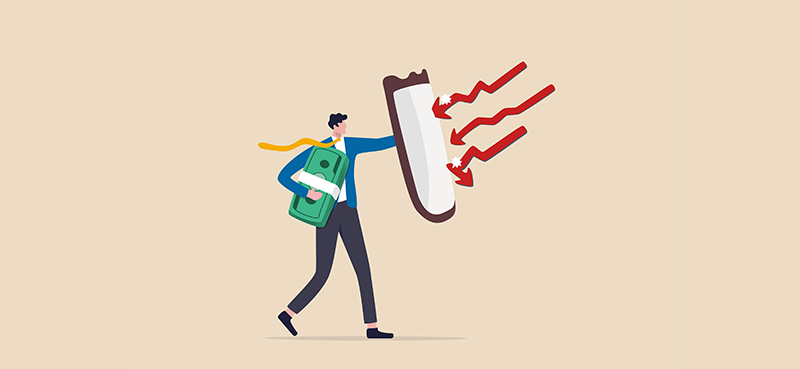What goes up must come down. Just ask David Blaine.
Yesterday, in a stunning demonstration of human capabilities, the famous illusionist launched himself up 24,000 feet tethered to a bunch of balloons—one of which was an experimental aircraft.
But the landing didn’t go according to plan—Blaine was forced to improvise and release his parachute outside of the planned zone. Thankfully, he came down safely.
This feat happened to coincide with another record market day—the S&P 500 jumped to yet another all-time high, the most in two months. And I couldn’t help but see an analogous lesson for investors.
With the market flying at 24,000 feet, it’s important to prepare the parachute for future portfolio stress…
And the simplest way to do it is to hold a higher cash position.
You might not feel you need portfolio cash, despite the massively red day today. After all, the global rally is largely due to nearly unlimited liquidity unleashed by the central banks… and there’s no end in sight to these free money policies.
Moreover, thanks to the same policies, cash doesn’t generate any income these days.
The good news is there are more ways to hold extra “cash” in your portfolio than fiat currencies…
One option is to hold a larger position in cash-rich companies.
This way, you indirectly increase your portfolio’s cash exposure… without reducing your overall market exposure.
There are a lot of other benefits to rotating into cash-rich companies and out of high-growth (and currently overvalued) stocks.
For one thing, if a company has a significant amount of cash and equivalents on its balance sheet, this tells us volumes about its business.
While not a “productive” asset per se, a large cash pile is generally a sign that a company is operating a healthy business. That’s because, in a normal course of operations (other than selling assets, issuing stock, or borrowing more), a business can grow its cash balance if it grows its revenues, increases margins, or reduces expenses.
Secondly, a well-run company with fully funded and profitable operations can afford to fund share buybacks or pay dividends to shareholders.
Finally, don’t forget about acquisitions. While today’s market puts a huge premium on a company’s ability to grow, you can also make a case for the other side of the market—the slow-growers left behind by this rally.
Some of them are zombie companies: no growth, little cash, and high debt… with little hope of repaying it.
But others are well-established companies that can literally buy growth… if they have enough cash. A large cash position makes it easier to borrow, too, which increases the potential M&A size. And by buying other businesses, many large-cap corporations are able to pull themselves out of a prolonged slump and revive their growth prospects.
This was true in the past for many large pharmas—and might end up giving that extra boost to Bristol-Myers Squibb (BMY), thanks to its recently closed $74 billion acquisition of biotech Celgene.
Large tech is also known to buy growth when it’s desperately needed—like IBM’s acquisition of open source leader Red Hat for $34 billion in 2018… Or even when they just want an edge over competition—like salesforce.com’s (CRM) $6.5 billion acquisition of cloud integrator MuleSoft.
Without a doubt, some companies overpay and several acquisitions end up being duds. That’s par for the course.
But without cash on hand, the acquisition avenue of growth is as good as closed.
If you don’t want to hold a large cash position, hold cash-rich companies. Some might not pay dividends, but in this low-rate environment, they can still benefit a well-diversified portfolio.
Editor’s note: If you’re one of Genia’s Moneyflow Trader subscribers, congratulations! You’re already protected from a market downturn… and collecting triple-digit gains from its upside.
If you’re going it alone, I urge you to learn more about Genia’s incredibly powerful strategy for an all-weather portfolio. And why Frank follows Moneyflow Trader with his own money.





















